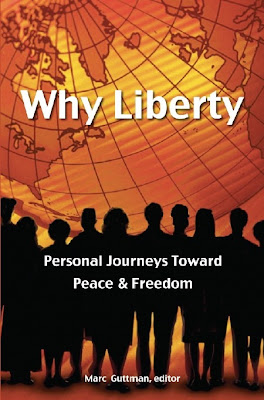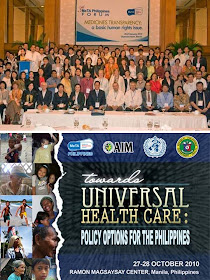In the Philippines, that theory has been revised to represent the so-called "marginalized sectors" of society. And in practice in the country, almost all groups of opportunists mix up with well-meaning individuals to help centrally plan and change the country, towards their own world view of forced collectivism. Thus, we have a son of the former President representing the party of security guards, a former Cabinet Secretary (DND, DENR, DOE) who wanted to represent the party of bus drivers (he committed suicide a few years ago), of rich people representing parties of rice farmers, and so on.
In addition, even supposedly "non-marginalized" sectors like athletes, media people, cock fighting aficionados, showbiz guys, LPG retailers, physicians, engineers, other professionals also participated or attempted to join the PL free for all political opportunism.
A friend, election lawyer and legal NGO leader Luie Guia posted a news article in his facebook status and he commented,
A political party should represent a political ideology. Since there are not too many political ideologies around the planet, then the number of political parties should be few only, not dozens, not hundreds. The PL system -- both in theory and practice in the PH -- has further bastardized the theory and use of a political party. That is why I earlier argued that the PL system should be abolished. And all aspiring politicians from the existing PL should form a real political party that can contest posts from the local to national levels, or join existing ones.
Luie added that the Philippine version of PL has given PL a bad name at least to Filipinos. A true PL, where voters get to vote for parties and thus their ideologies rather than individuals, has been the system chosen by many emerging democracies as it allows even those in the fringes to be represented if they get enough votes. Regional and even ethnic tensions tend to be mitigated because more sectors of society are accommodated in the formal structure of government. I don't favor abolition of PL. I wish it to be re crafted and redesigned to make it work as it really should.
Below is a list of political parties in the Philippines:
A. Big national political parties:
1. Liberal Party (LP)
2. Lakas-Kampi-CMD
3. Nacionalista Party (NP)
4. Nationalist People's Coalition
(NPC)
5. Partido Demokratiko PIlipino -
Lakas ng Bayan (PDP-Laban)
6. Laban ng Demokratikong PIlipino
(LDP)
7. Kilusang Bagong Lipunan (KBL)
B. Marginal national political parties:
8. Bagumbayan-Volunteers for a New Philippines (Bagumbayan-VNP)
9. People's Reform Party (PRP)
10. Ang Kapatiran Party (AKP)
11. Gabay Bayan
C. Local political parties, 91
D. Party list, currently sitting in the HOR: 42, 26 of which start with 1 or A:
I-CARE, 1-UTAK, A Teacher, AA Kasosyo, AAMBIS OWA, Aangat Tayo, Abante Mindanao, ABONO, ABS, ACT Teacher, AGAP, AGBIAG, AGHAM, AGP, Akbayan, Ako Bicol, Alagad, ALE, ALIF, An Waray, ANAD, Anakpawis, Ang Kasangga, APEC, Ating Koop, AVE
Bagong Henerasyon, Bayan Muna, Buhay, Butil, CIBAC, Coop Natcco,
Diwa, Gabriela, Kabataan, Kakusa, Kalinga, LPGMA, PBA, Senior Citizens, Una ang
Pamilya, Yacap
Those that lost, about 100+ other party lists.
See a longer list of political parties in the Philippines and the name of their leaders in Wiki here.
There are too many political parties in the country already, both at the national and local levels. Adding the PL system makes it a dizzying situation. So with the free for all nature of PL opportunism, and these PLs are arranged alphabetically in the ballot box and voters can choose only one out of 100 plus PLs, most groups start the name of their party with 1 or A. There could be up to 400+ groups that want accreditation and participation in the PL system but the Comelec conducts preliminary hearing and remove many of them.
There are no marginalized sectors, only marginalized individuals. There are rich and poor individuals in each of those sectors -- farmers, fisherfolks, workers, women, youth, senior citizens, indivigenous people, security agencies, teachers, and so on.
I believe we need to go back to a few political parties, even a two- or three-party system. A political party should be able to defend its political ideology or philosophy, embodied in various advocacies or platform of government from the local up to the national government levels. For instance, a political party for more and bigger government should be able to argue why such philosophy should be applied nationwide, from the barangay or village level all the way up to the city, province and the nation. On the other hand, a political party for less government, or a midway advocating for more public-private partnership (PPP) in many sectors, should be able to articulate their philosophies and their application nationwide.
Thus, having too many political parties, PL or otherwise, often contribute to political miseducation and opportunism. It corrupts further the minds of the people, that they too can centrally plan the country and the world and it is relatively easy to do that via backdoor entrance like the PL system.
See also:
Party List 1: Opportunism, 2001 Elections, November 28, 2005
Party List 2: Opportunism, 2004 Elections, December 12, 2005
Party List 3: Marginal Parties Should Aspire to Become Big, January 12, 2006
Party List 4: Why it Should be Abolished, August 04, 2011



















